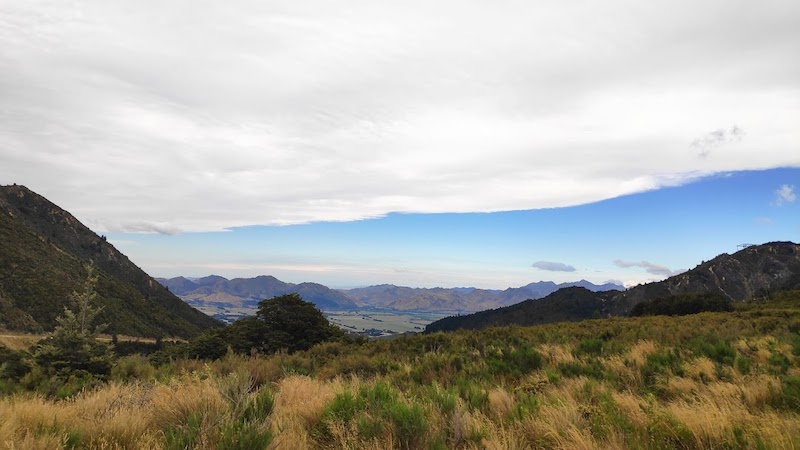Guest Post: A Historial Look into New Zealand Whisky

Photo Credit: Greig Price
Most people imagine New Zealand to be a clean, peaceful country with a large population of sheep. To those who had been there, fond memories of food, Hobbiton, clear blue skies linger, and for the drinkers, sauvignon blanc. You may have tried New Zealand wine, but have you tried New Zealand whisky?
What is New Zealand whisky and does it even exist? To understand the story of New Zealand whisky, we need to go back to the history of New Zealand itself.
A Short History of New Zealand
Aotearoa (land of the long white cloud) was a country covered in forests and abundant birdlife. The Maori people settled there and the British later colonized it. The resulting interactions between these two peoples influenced later generations and whisky production. New Zealand was seen as the final frontier for the British colonial masters. Creating a new nation, the migrants wanted a society unbound by the rules of the countries they left behind. The Maori culture values water and land, and these values progressively manifest themselves into the thinking of the new settlers.
The peoples of New Zealand realised the importance of nature and the need to protect it quickly. They enacted new legislation to protect the natural resources for future generations. With this, a growing awareness of where people lived, the food they ate and the water they drank began in earnest. Therefore, New Zealand was spared the blight of heavy industries, and the water quality benefited from it.
The Influence of Clean Environment on Wine and Whisky
For wine drinkers, location is everything, and to scotch drinkers, the mention of Islay will conjure up images of peat, smoke and brine. For New Zealand whisky, the inhabitants, terrain, and scarcity of available resources heavily influence the production. The new colonial arrivals brought with them a rich history of distilling, particularly the Irish and Scots. It wasn’t long before a thriving unregulated “moonshine” industry sprang up, with reports of whisky being made as early as the 1830s.
Early Whisky Production and Regulations
Onerous government regulations combined with prohibition and world wars delayed large scale commercial whisky production until 1969. The behest of Scottish banks to quell nascent competition (See the Pattison Crash) was largely a part of the reason. In 1969, the now-defunct Willowbank distillery sprang up. Fittingly, Willowbank was located in Dunedin (Gaelic for Edinburgh), the most Scottish city in New Zealand. A statue of the Scottish poet, Robert Burns still resides in the centre of the city. Dunedin is a coastal city surrounded by misty hills with a Scottish climate. It was a perfect location for the production of high-quality New Zealand whisky.
Initial production requirements which called for the use of Scottish peat, water and barley were not practical due to the distances and costs involved. Locally sourced ingredients were used instead. The whisky received mixed review – “It’s palatable, just not Scotch”.
The Willowbank distillery produced blended whisky under the Wilson and 45 below labels, and a single malt named Lammerlaw. As with all single malts, the distillery gave it a meaningful name after their water source – the Lammerlaw mountain ranges. There are also lots of plains, where farmers grow the bulk of New Zealand barley during the long, hot and dry summers.
Change of Ownership
In 1980, Seagram took charge of operations after a change of ownership. Lammerlaw single malt gained a reputation as a quality single malt whisky as a result. Foster’s brewing took over in 1997, resulting in Willowbank getting stripped of its assets. Its pot stills went to Fiji for the production of rum. Given the “taste” of Foster’s beer and their lack of foresight, it is somewhat ironic that the stills from Willowbank have gone on to produce highly sought-after Fijian rum.
Fast Forward to the Present
With the distillery closed, there were over 400 barrels of whisky that were sitting around, unwanted. In 2010, these barrels found their way into the hands of The New Zealand Whisky Company and Thomson Whisky. Both companies released bottlings from these barrels successfully. Noted whisky writers, Jim Murray and Charles Maclean, further attested to their quality and the whiskies won awards at major international competitions. The current oldest release is a 30-year-old single malt, a testament to the staff at the sadly closed Willowbank.
New Zealand Whisky Producers
Thomson Whisky was quick to realise that their barrels would not stay full forever, and they need a new source of whisky. This spurred Thomson to start producing whisky. A new batch of distillers, such as Workshops and Cardrona, also started whisky production. New Zealand whisky producers focused on best practices in small batches using locally-sourced ingredients. For example, Workshops Whisky, who built their still inhouse and sourced their water from an onsite well direct from the Southern Alps is a success. Thomson Whisky, who have used locally-sourced peat, applied Manuka tree smoke to the barley and currently using ex-local pinot noir barrels for ageing.
Exciting Times for New Zealand Whisky
So to summarise the points made earlier, New Zealand is a country where its inhabitants used the physical isolation and environment to make whisky. Using the best local ingredients where possible, with time-honoured techniques, they make whiskies that are light and floral in character. With future releases, this may no doubt change, especially with wider distribution starting to occur. Sustainability and quality over quantity are paramount, which in the coming years, New Zealand whisky will start to gain more attention as a result of this approach.
About the Author
Greig Price is a native of New Zealand who has lived overseas on and off for the last twenty years and the last 12 in Singapore. Whenever this kiwi is homesick, he’ll seek out pies, potato chips or pinot noir. Or generally, anything else alcoholic from the land of the long white cloud and then bore you with why it tastes so great


